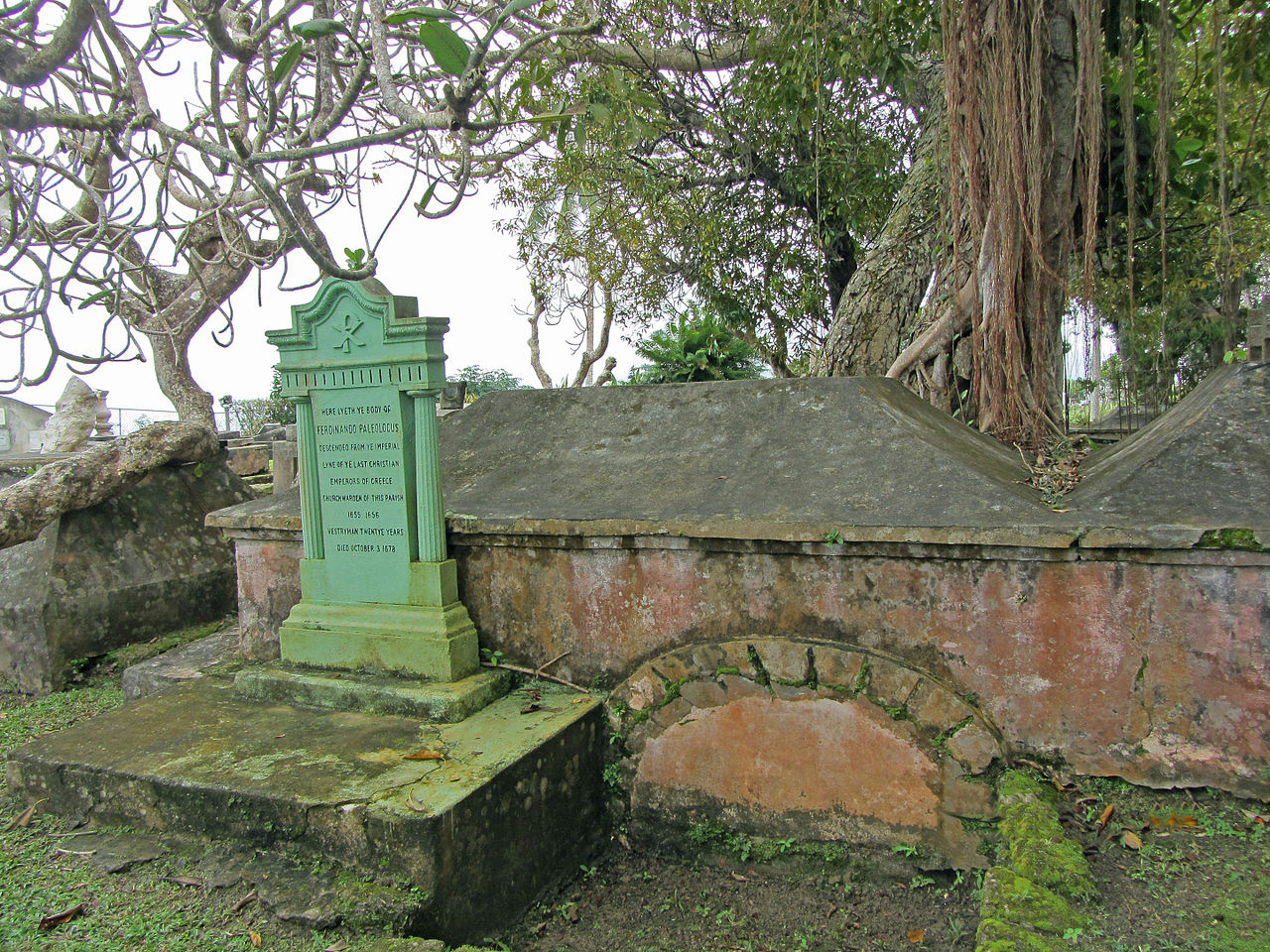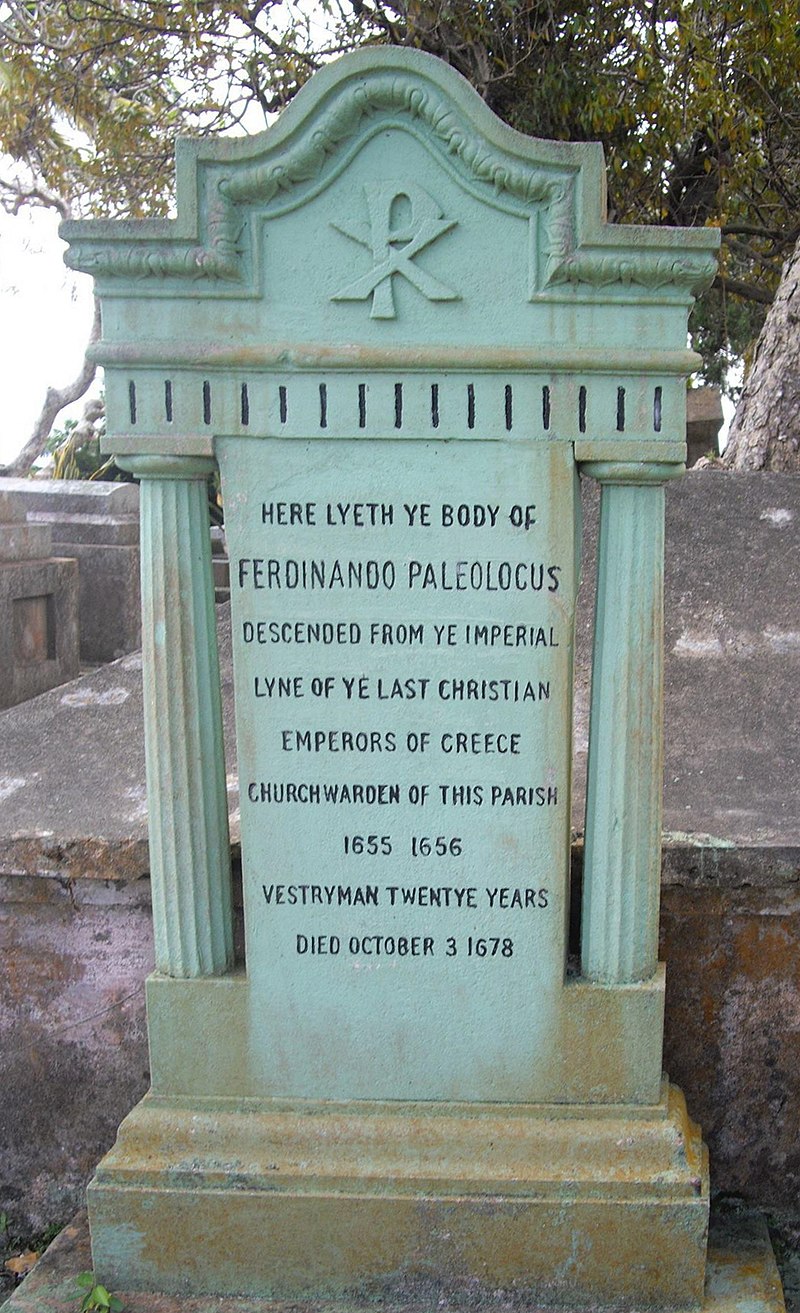
The last descendant of the Byzantine Emperor Constantine Palaiologos is buried in the most unlikely of places – on the island of Barbados in the Caribbean.
Ferdinand Paleologos asserted his descent from the Palaiologos dynasty, particularly through his ancestor Thomas Paleologos, who was a brother of the last Byzantine Emperor, Constantine.
He lived in the 17th century and was born in England. His roots were from the Peloponnese, which was a part of the Ottoman Empire following the fall of Constantinople in 1453.
His ancestors had scattered throughout Europe, seeking refuge in various European courts and attempting to raise support for the reconquest of Byzantium.
Growing up in England, Palaiologos demonstrated exceptional diplomatic and political skills. His name frequently appears in diplomatic correspondences between European courts, suggesting his involvement in mediating disputes and fostering alliances.
Though limited historical records make it difficult to discern the exact extent of his diplomatic operations, his presence during crucial negotiations is undeniable.
Religion played a paramount role in Ferdinand Paleologos’ life, embodied by his deep involvement in the religious affairs of his time. As a member of a family with Byzantine Orthodox Christian roots, he partook in the intricate interplay between Catholicism and Orthodoxy in Europe.
Ferdinand’s religious affiliation has often sparked debates among historians, as his actions suggested a delicate balancing act between his Byzantine Orthodox upbringing and political alliances that leaned towards Catholic powers.
Palaiologos moves to Barbados
From England, he emigrated to Barbados around 1644 and he quickly integrated himself with its elite. He cultivated cotton or sugar and possibly pineapples and was influential in the affairs of the local St. John’s Parish Church, for which he became a vestryman and then a churchwarden.
Ferdinand constructed a great mansion called Clifton Hall, named after the home he had lived in with his family in Cornwall.
By the time of his death in 1670, Ferdinand had become known on the island as the “Greek prince from Cornwall”, a nickname he would be remembered by for centuries.
The current marker for his gravesite at St. John’s Parish Church, which erroneously gives the date of his death as 1678 instead of 1670, was erected in 1906 and is a local tourist spot.

In 1831, the island of Barbados was struck by a hurricane which destroyed the church. Ferdinando’s lead coffin was discovered facing a different position than all the others and his skeletal remains were lodged in quicklime.
The body is buried with the feet pointing to the east is, despite local legend and the writings of historians on Barbados, not a strange Greek custom but the common practice for burials in England.
If Ferdinand and his father were genuine members of the Palaiologos family, Ferdinand was one of the last living members of the dynasty. Ferdinand was only survived by his son, Theodore, who in turn was only survived by his daughter, Godscall, who disappeared from history.
Related: The Legend of the Last Byzantine Emperor, Constantine Palaiologos
See all the latest news from Greece and the world at Greekreporter.com. Contact our newsroom to report an update or send your story, photos and videos. Follow GR on Google News and subscribe here to our daily email!



